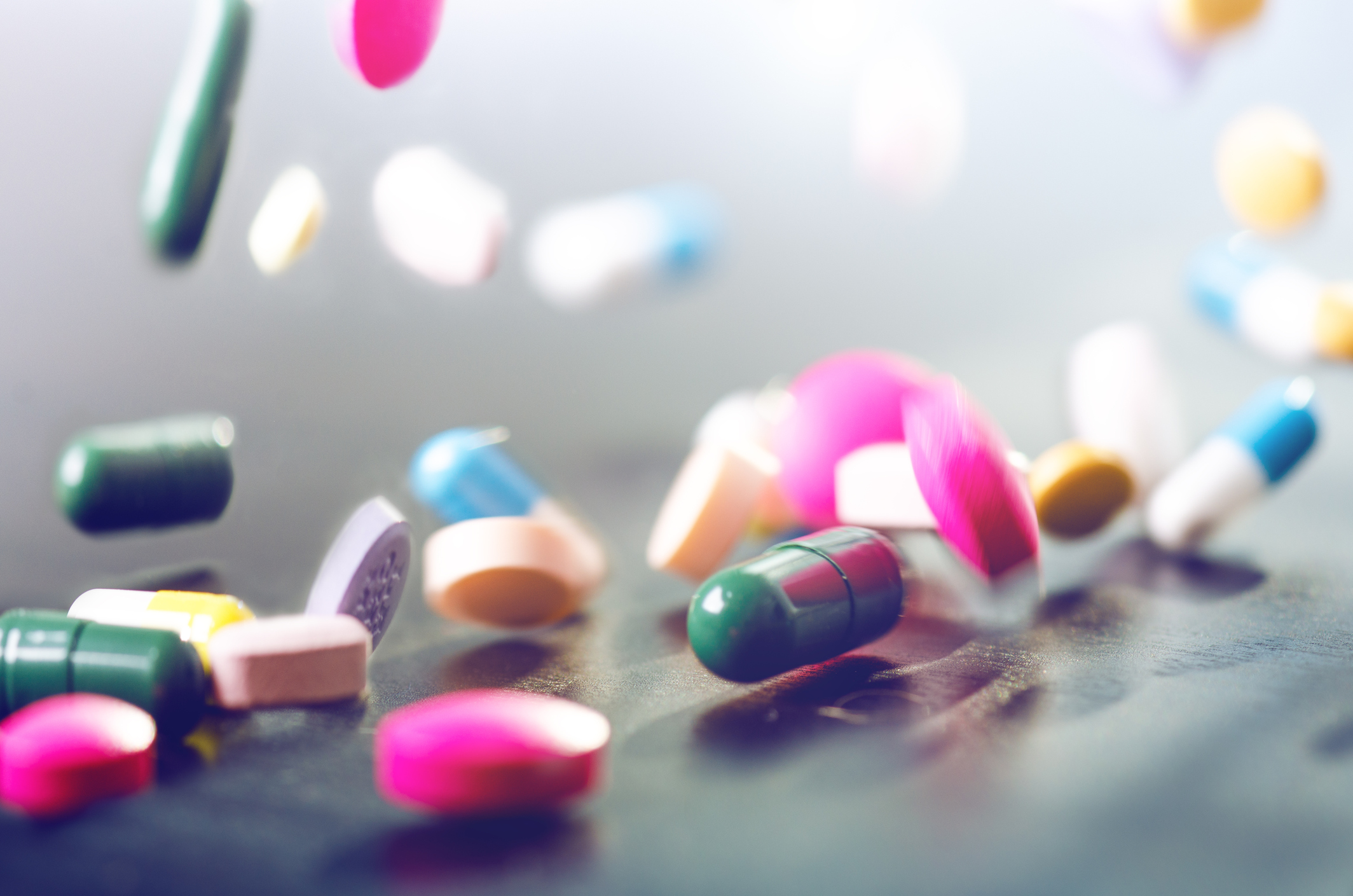Antibiotic resistance
Posted on 19th March 2024 by Rosario De Feo

Rosario De Feo explores the problem of antibiotic resistance, and some possible solutions.
Antibiotics stand as a cornerstone in modern medicine, profoundly enhancing human health by drastically reducing mortality rates. Alongside advancements such as accessible drinking water and the development of vaccines, they are one of the most impactful discoveries in improving community well-being.
The first researcher responsible for the discovery of antibiotics was an Italian, Vincenzo Tiberio, who in 1895 described the bactericidal power of some moulds, anticipating Alexander Fleming’s discovery of penicillin by more than thirty years. In fact, it was in 1928 that Fleming managed to characterize penicillin, officially giving way to the birth of antibiotics, a discovery that would earn him the Nobel Prize.
Antibiotics are substances obtained from living organisms or synthesized in the laboratory, capable of preventing the growth of microorganisms and even causing their death. These drugs are used to treat or prevent infections caused by bacteria, preventing their multiplication and spread within the body.
Antibiotics are generally prescribed when it is difficult for the bacterial infection to heal on its own, or when healing times would be too long and thus dangerous for patients. Here’s why antibiotics are one of the most important discoveries for humanity, as they have made it possible to cure serious and lethal diseases (such as tuberculosis, pneumococcal pneumonia, surgical wound infections, and urinary tract infections), marking a milestone in the fight against infectious diseases. This also meant improving quality of life, as a healthy society is a more productive society.
Unfortunately, however, together with the birth of antibiotics, a form of resistance to these drugs has developed on the part of the microorganisms that they themselves were supposed to eradicate.
A ‘no’ longer emerging problem
In recent years, antibiotics that were commonly used to treat bacterial infections (such as penicillin in bacterial pneumonia) have become less effective or no longer work due to inappropriate use.
The fact that bacteria develop resistance to an antibiotic is a natural evolutionary process, but this phenomenon is accelerated and aggravated by excessive and often incorrect use of these drugs. Any bacterium that survives an antibiotic treatment can become resistant, multiply and transfer its ability to resist antibiotics to other bacteria.
The term antibiotic resistance refers to the ability of a bacterium to resist the action of one or more antibiotic drugs and therefore to survive and multiply even in their presence. This type of resistance can be both innate (when the bacterium is naturally resistant to an antibiotic) and acquired (when a bacterium becomes resistant to the action of an antibiotic drug through changes to its genetic heritage).
It is important to underline that the risk of being infected by antibiotic-resistant bacteria concerns not only the person who takes antibiotics improperly, but also those who will subsequently be infected by those same bacteria: this is therefore why antibiotic resistance is not only an individual problem, but a social problem, affecting humans and animals.
Infections caused by antimicrobial-resistant germs are difficult, and sometimes impossible, to treat also because the germs become resistant to more than one drug (multi-resistant).
In many cases, antimicrobial-resistant infections require extended hospital stays, additional follow-up doctor visits, and costly and toxic alternatives. It’s important to highlight that any time antibiotics are used, they can contribute to antimicrobial resistance but that when antibiotics are needed, the benefits usually outweigh the risks of antimicrobial resistance.
Why have antibiotics been misused over time?
In the past years, and nowadays, too many antibiotics are being used unnecessarily and misused mainly because:
- doctors may inappropriately prescribe antibiotics based on inadequate information: for example, the Centres for Disease Control and Prevention (CDC) estimates that, in the United States, about 47 million antibiotic courses are prescribed for infections that don’t need antibiotics;
- the public has misconceptions about the benefits and risks of antibiotics: people often think of antibiotics as the panacea of all diseases and they take pills against medical advice. For example, without finishing the appropriate course of treatment.
As a result, according to the data of Italian ‘Ministero della Salute’, 1/3 of infections in Europe are caused by antibiotic-resistant bacteria. The impact of infections with antibiotic-resistant bacteria is equal to that of infections due to tuberculosis, influenza and HIV/AIDS combined.
Unfortunately, ‘the worst is yet to come’ because if we do not take action to eliminate this huge problem the situation will surely be catastrophic. In fact, antibiotic resistance has been called a ‘silent pandemy’, a term well described by Mestrovic, T. et in a paper published in The Lancet. They estimate that 541,000 deaths were associated with, and 133,000 deaths were attributable to, antimicrobial resistance in the whole WHO European region in 2019. Seven leading pathogens were responsible for about 457,000 deaths associated with resistance in 53 countries of this region. The elevated levels of resistance for several important bacterial pathogens and pathogen–drug combinations, together with the high mortality rates associated with these pathogens, show that antimicrobial resistance is a serious threat to public health in the WHO European region. The prospects are even worse since, according to the UN Environment Program, up to 10 million deaths related to antibiotic resistance could occur annually by 2050.
It is very important to note, however, that antimicrobial resistance must be considered from the point of view of both human health and animal health and well-being, which are strictly interconnected, as well as food safety and environmental health. In fact, the same difficulty in care also affects animals, food-producing animals (becoming a threat also during everyday meals) and the environment, because antibiotic residues in the environment can contaminate water, soil, and vegetation. These residues continue to be active and carry out their action against the bacteria that commonly populate them, thus contributing to making them resistant.
It’s clear that we are in a race against time: without new solutions, the problem will have many repercussions for our health, the healthcare system, and our economy.
How to solve the problem: present perspectives
The most worrying thing is that the decrease in the effectiveness of existing antibiotics, however, is not compensated by the simultaneous introduction of new antibiotics. This happens not only because of the difficulty of the development of new drugs, but also because many years must pass between the discovery of new molecules and their use in humans due to all the medical testing required.
Today, the problem of antibiotic resistance is one of the main public health problems worldwide and, in recent decades, international bodies including the World Health Organization (WHO), have produced recommendations and proposed strategies aimed at containing the phenomenon with a so-called “One Health” approach, i.e. a joint effort of multiple professional disciplines (human and veterinary medicine, agri-food sector, environment, research and communication, economics and others) that operate, at a local, national and global level, with a common purpose which can be summarized in three priority objectives:
- prevent and reduce infections, especially those related to health care
- promote and ensure prudent use of antimicrobials
- minimize the incidence and spread of antibiotic resistance and the related risks to human and animal health.
Other strategies explored by the international community include:
- Emphasizing the need for governments to invest in the research and development of new therapeutics against bacterial pathogens.
- Highlighting the challenges, advancements, and current standing of the clinical and preclinical antibacterial research
- Presenting new strategies for the discovery of new antibacterials, a field in which artificial intelligence and emerging bioinformatics software may be helpful in finding new molecular combinations.
- Implementing preventive techniques to reduce the spread of antibiotic resistance both in hospitals and in the population.
Where does this leave us?
In conclusion, it is of capital importance that the population is aware of this very important and impactful problem, and that health professionals are all on the front line to ensure a culture of appropriate use of these drugs.
Bibliography
- Bhaskar, P. & Sahu, B. Antimicrobial resistance: global concern and the critical need for new antibiotics. Appl. Biol. Chem. J. TABCJ 4, 1–3 (2023).
- CDC. What’s the big deal about antimicrobial resistance? Centers for Disease Control and Prevention https://www.cdc.gov/antibiotic-use/antibiotic-resistance.html (2023).
- Fighting antibiotic resistance—strategies and (pre)clinical developments to find new antibacterials. https://www.embopress.org/doi/epdf/10.15252/embr.202256033 doi:10.15252/embr.202256033.
- Storia dei farmaci: la scoperta degli antibiotici. https://www.aifa.gov.it/-/storia-dei-farmaci-la-scoperta-degli-antibiotici.
- Larsson, D. G. J. & Flach, C.-F. Antibiotic resistance in the environment. Nat. Rev. Microbiol. 20, 257–269 (2022).
- Mestrovic, T. et al. The burden of bacterial antimicrobial resistance in the WHO European region in 2019: a cross-country systematic analysis. Lancet Public Health 7, e897–e913 (2022).
- Schrader, S. M., Vaubourgeix, J. & Nathan, C. Biology of antimicrobial resistance and approaches to combat it. Sci. Transl. Med. 12, eaaz6992 (2020).
- Uddin, T. M. et al. Antibiotic resistance in microbes: History, mechanisms, therapeutic strategies and future prospects. J. Infect. Public Health 14, 1750–1766 (2021).
- Antimicrobial Resistance in the EU/EEA – A One Health response. https://www.ecdc.europa.eu/en/publications-data/antimicrobial-resistance-eueea-one-health-response (2022).
- Environment, U. N. Antimicrobial resistance: a global threat. UNEP – UN Environment Programme http://www.unep.org/topics/chemicals-and-pollution-action/pollution-and-health/antimicrobial-resistance-global-threat (2020).



